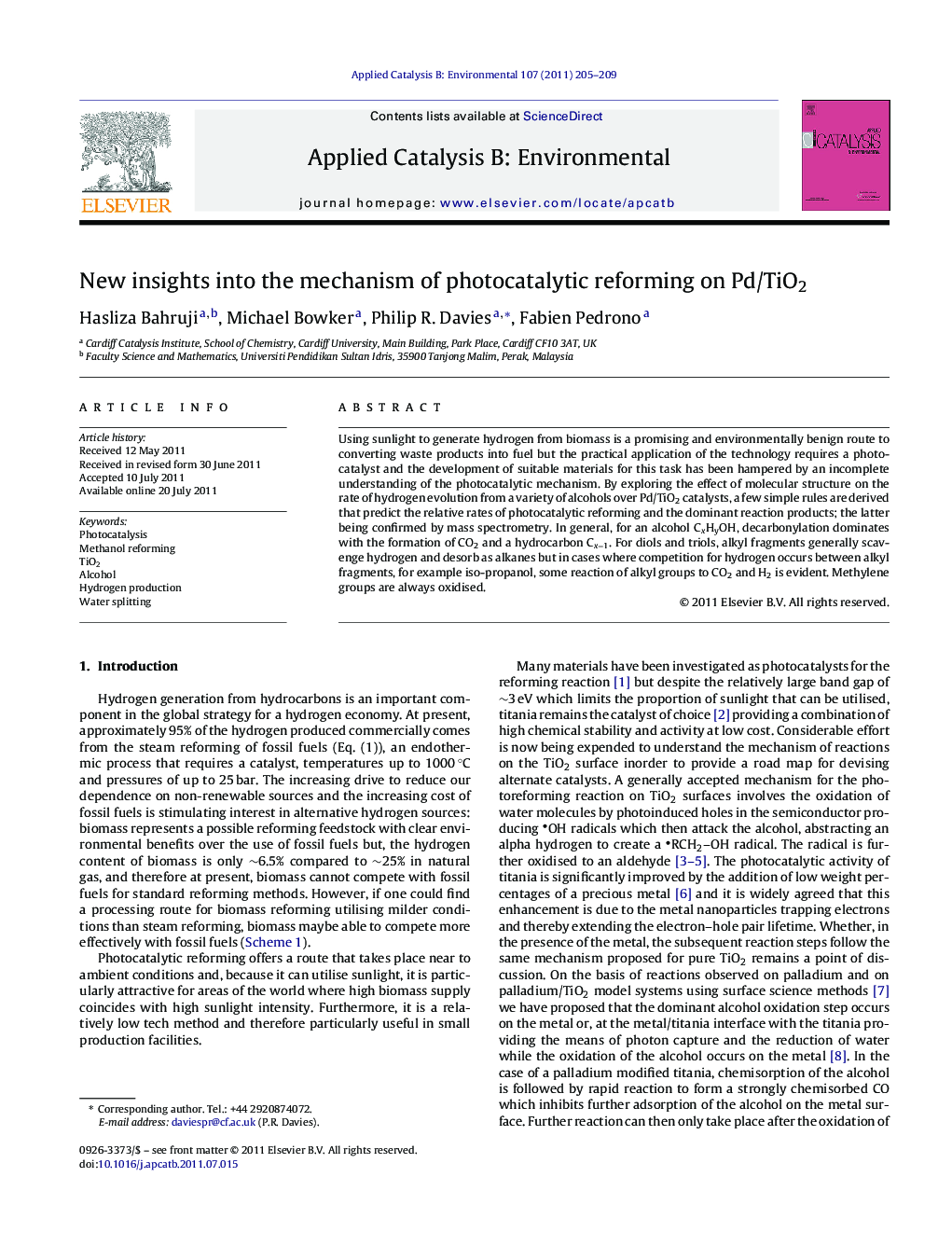| Article ID | Journal | Published Year | Pages | File Type |
|---|---|---|---|---|
| 46739 | Applied Catalysis B: Environmental | 2011 | 5 Pages |
Using sunlight to generate hydrogen from biomass is a promising and environmentally benign route to converting waste products into fuel but the practical application of the technology requires a photocatalyst and the development of suitable materials for this task has been hampered by an incomplete understanding of the photocatalytic mechanism. By exploring the effect of molecular structure on the rate of hydrogen evolution from a variety of alcohols over Pd/TiO2 catalysts, a few simple rules are derived that predict the relative rates of photocatalytic reforming and the dominant reaction products; the latter being confirmed by mass spectrometry. In general, for an alcohol CxHyOH, decarbonylation dominates with the formation of CO2 and a hydrocarbon Cx−1. For diols and triols, alkyl fragments generally scavenge hydrogen and desorb as alkanes but in cases where competition for hydrogen occurs between alkyl fragments, for example iso-propanol, some reaction of alkyl groups to CO2 and H2 is evident. Methylene groups are always oxidised.
Graphical abstractFigure optionsDownload full-size imageDownload as PowerPoint slideHighlights► Relative hydrogen evolution rates depend upon the “hydrogen stoichiometry”. ► Products of the photocatalytic reforming determined by mass spectrometry. ► Four rules derived predicting hydrogen stoichiometry of a molecule. ► Photocatalytic reforming rates equivalent for all the molecules studied. ► Benzyl alcohol poisons the photocatalyst.
